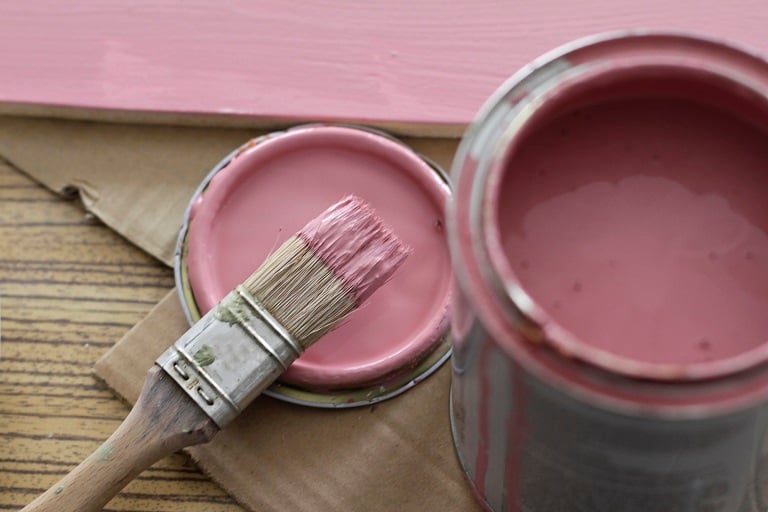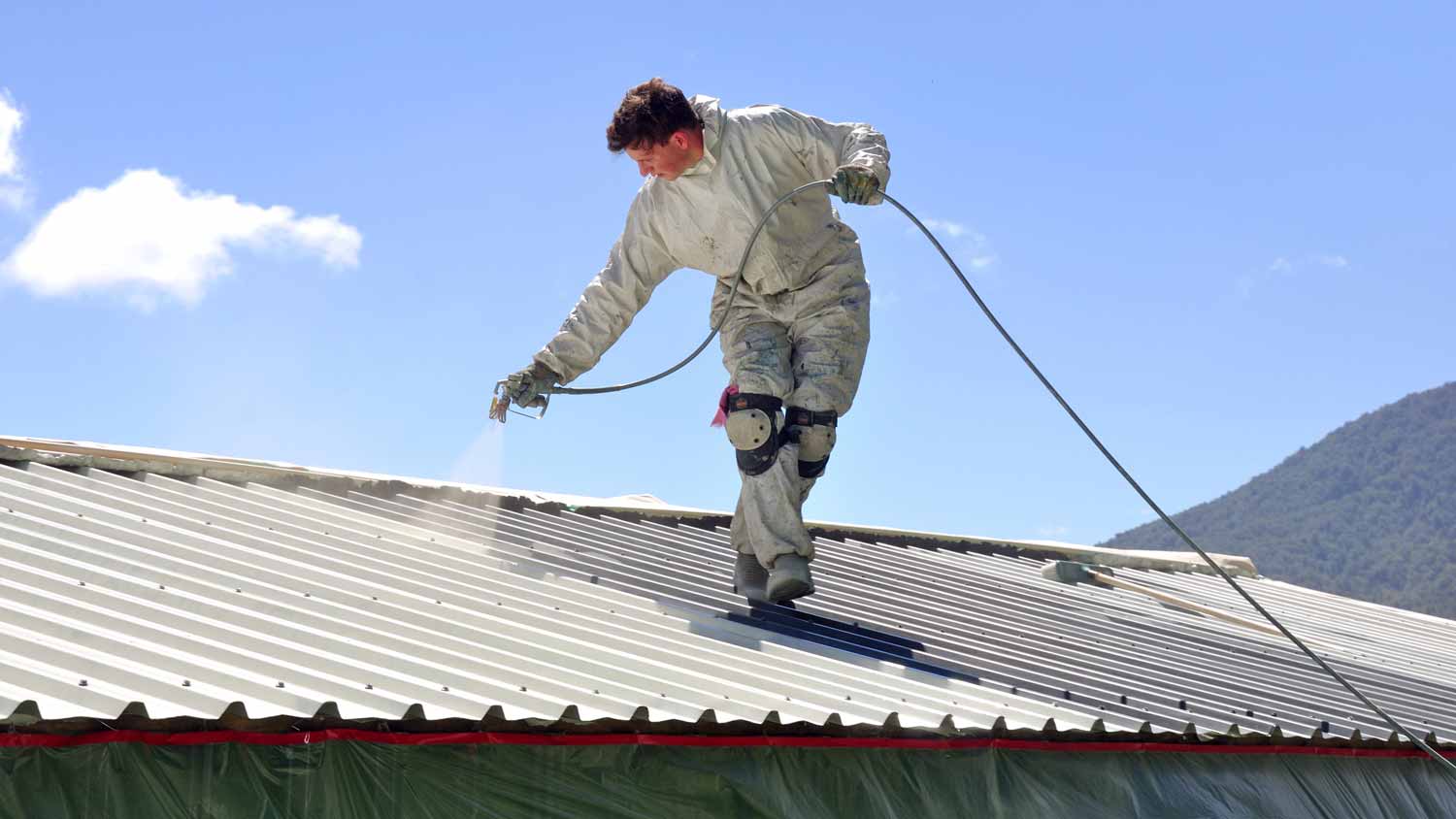
Wondering about the cost to chalk paint furniture? Learn prices, key cost factors, and tips to help you budget for your next furniture makeover.
Enamel paint is the perfect option if you're looking to achieve a glass-like or glossy hardened finish


Enamel paint has a high-gloss, shiny finish, making it a popular choice for certain projects.
Enamel paint is strong and resistant to cracking, so it’s commonly used in high-moisture areas.
Enamel paint can commonly withstand temperatures up to 500 degrees.
A few downsides are that it has a strong smell, is difficult to remove and mix, and is expensive.
Less strong alternatives include latex or acrylic paints.
While browsing craft stores and searching the internet, enamel paint will inevitably come up as a potential option for home painting projects. This versatile paint type is perfect for a wide range of scenarios, from painting your hallway to giving a clawfoot bathtub a makeover. Learn more about enamel paint’s history, best uses, and pros and cons.
You might see a lot of different types of paint called “enamel paint,” which is an umbrella term meaning one thing: This paint type is going to dry and leave behind a glossy, strong finish. Its lacquered look isn’t the only thing that makes it popular, either. Enamel paints are strong, long-lasting, and easy to clean. Does it get much better than that?
Enamel paint was introduced just after the end of World War II as an alternative to baked enamel—a material used in factories on things like ovens and tubs, which also leaves behind a hardened shell on the object’s surface. Baked enamel at the time was more expensive and impossible to DIY.
Most enamel paints are made using solvents (though recently, some water-based options have been making their way to market). Your favorite enamel paints are combined with a resin in factories before being sold ready to use. When that mixture is exposed to air, it starts to immediately harden into a glass-like coating.
Something that distinguishes enamel paint from other types is the fact that it is made of two reactive ingredients, the pigment itself and the solvent, whereas other paints designed for coating surfaces are made up of nonreactive chemicals. Don’t let that make you nervous; it’s a paint with a long history that is easy to use safely.
If you’re preparing to paint a high-traffic area like a bathroom or a stairway, then enamel paint is a perfect choice. People commonly use it in spaces that see a lot of use, and that will hopefully, be on the receiving end of a lot of cleaning products, too. Local painting pros can help you to determine which type of paint is right for your project, but here are a few places to consider for enamel paint:
Your bathroom and kitchen faucets and knobs get a lot of use, and you probably spend a lot of time disinfecting these areas, too. Because enamel paint is waterproof and durable, it’s a great option for moist areas that receive a lot of cleaning. Enamel paint will evenly coat metal, so it works well if you want to refresh your faucets without buying and installing something new.
If you’re repainting the outside of your house, enamel paint will stand up to changing temperatures, harsh sunlight, wind, rain, and other elements that can cause other types of paint to quickly fade or chip. The glossy appearance will also boost your curb appeal with a fresh look.
Enamel paint is also a good candidate for refreshing outdoor furniture. Faded furniture made of metal, wood, or even plastic can get a new look with a few coats of enamel paint. You can either apply it by brush or using spray enamel paint. Be sure to wear a painter respirator mask to protect yourself from the volatile organic compounds (VOCs) in enamel paint.
Whether you want to give your grill a makeover or need to hide a couple of scratches on the fridge, enamel paint is your new best friend. Look for appliance-specific enamel paint for interior appliances, or buy a heat-resistant enamel paint for grills and ovens. Most enamel paint will tolerate temperatures up to 500° Fahrenheit, while heat-resistant products can withstand temperatures around 2,000° Fahrenheit.
Glossy enamel paint spruces up interior and exterior doors, door frames, and window frames while withstanding high traffic and extensive exposure to sunlight and fluctuating temperatures.
Because enamel painted surfaces are easy to clean, this paint is ideal for use on cabinets. Kitchen cabinets are regular victims to food and grease splatters so a fresh enamel coating will make for easy cleanup.
Handrails, often made from metal or wood, get a lot of hand traffic. Apply one or two coats of enamel paint to keep them from looking worn out. Because it is so durable, enamel paint will works well for outdoor handrails.
There’s a reason so many different types of paint exist. Some projects will be perfect for enamel paints while others would fare better with a different option. Let’s break down those pros and cons of enamel paint.
Applies wells to decks
Works well on many different types of surfaces, from metal to concrete to hardwood
Goes on smoothly
Leaves a hard, glass-like glossy finish
Requires mineral spirits or other professional solvents to clean
Expensive (1 gallon can cost up to $90)
Difficult to mix
Strong odor (VOCs)

For the most part, the main difference between enamel paint and acrylic paint is that enamel paints are almost always oil-based, and acrylic paints are water-based. If you’re painting an interior wall in your home, chances are you’ll be using acrylic paint and not enamel for the following reasons:
It takes longer to dry than acrylic paint.
Enamel paint has a shiny, bump-free, high-gloss finish and acrylic paint leaves behind a matte finish.
This paint requires no primer coat, but most acrylics do.
It contains Volatile Organic Compounds (VOCs), and acrylic does not.
The paint holds its color with time; acrylic paint can change color with age.
From average costs to expert advice, get all the answers you need to get your job done.

Wondering about the cost to chalk paint furniture? Learn prices, key cost factors, and tips to help you budget for your next furniture makeover.

Looking to breathe new life into your space with a ceiling refresh? Learn about the cost to paint a ceiling and what factors can affect your total.

Discover the cost for your electrostatic painting home project, including average prices, cost factors, and tips to help you budget and save.

Painting trim is an exacting process where mistakes are costly. Here are some useful tips for painting trim that will save you time and frustration.

DIYing a paint job? From keeping a wet edge to cutting in with your brush, here are 10 tips for using a paint roller that’ll help you get it done right.

Both soda blasting and sandblasting use agitating media to clean or prepare surfaces for coating. This guide explains their applications and differences.